Key Takeaways
- A thrilling narrative explores trust and suspicion amidst chaos in a crisis-driven plot.
- The story’s five-part structure mirrors key phases, adding depth to unfolding events.
- Unusual animal behavior hints at larger disturbances in nature, possibly tied to environmental crises.
- A mysterious, jarring noise heightens pandemonium, captured authentically on set.
- Practical effects evoke genuine emotions, intensifying the film’s chilling moments.
- Characters’ diverse reactions to impending chaos blur the line between preparedness and paranoia.
In the closing scenes of “Leave the World Behind,” the backdrop of New York City is struck by bombs, an unsettling crescendo to a tale that unfolds with gripping intensity. Amidst the chaos, Rose ventures upon the Thorne family’s bunker, a sanctuary where she intends to revel in the final moments of the beloved show, “Friends,” while both families seek refuge from the unfolding crisis. Sam Esmail, the mastermind behind this Netflix movie adapted from Rumaan Alam’s novel, crafts a narrative that twists and turns, plunging characters portrayed by the likes of Julia Roberts, Ethan Hawke, Mahershala Ali, and Kevin Bacon into a maelstrom of uncertainties.
The story kicks off innocently enough as Amanda Sandford, embodied by the enigmatic Julia Roberts, arranges for a tranquil getaway. However, the tranquility shatters when a massive cyber assault cripples the internet and all communication networks. Fate intercedes as homeowner GH (George) Scott, portrayed by the compelling Mahershala Ali, along with his daughter Ruth (Myha’la), abruptly return home. What ensues is a fraught dance of trust and suspicion between the two families, each grappling with their own uncertainties in the face of an escalating crisis.
As tensions escalate, the situation spirals into a harrowing ordeal. Clay Sandford, embodied by the charismatic Ethan Hawke, and George embark on a desperate journey seeking aid from their neighbor Danny, a role played by the ever-talented Kevin Bacon. It’s Danny who proposes a daring solution—to seek refuge within the Thornes’ bunker. A bunker that Rose Sandford, portrayed by the youthful Farrah Mackenzie, had already discovered, drawn by the allure of catching the climax of “Friends.”
In this intricate tale of survival and mistrust, Esmail weaves a gripping narrative, leveraging stellar performances from the cast assembled under Netflix’s multi-picture deal with Barack and Michelle Obama. The movie’s depth lies not only in its apocalyptic backdrop but in the unraveling dynamics between characters thrust into an unprecedented catastrophe.
As the world outside descends into chaos, the bunker stands as a fragile sanctuary, harboring not just the characters but their fears, hopes, and the delicate threads of human connection amid an unraveling society.
Leave the World Behind’s Five Part Structure Explained
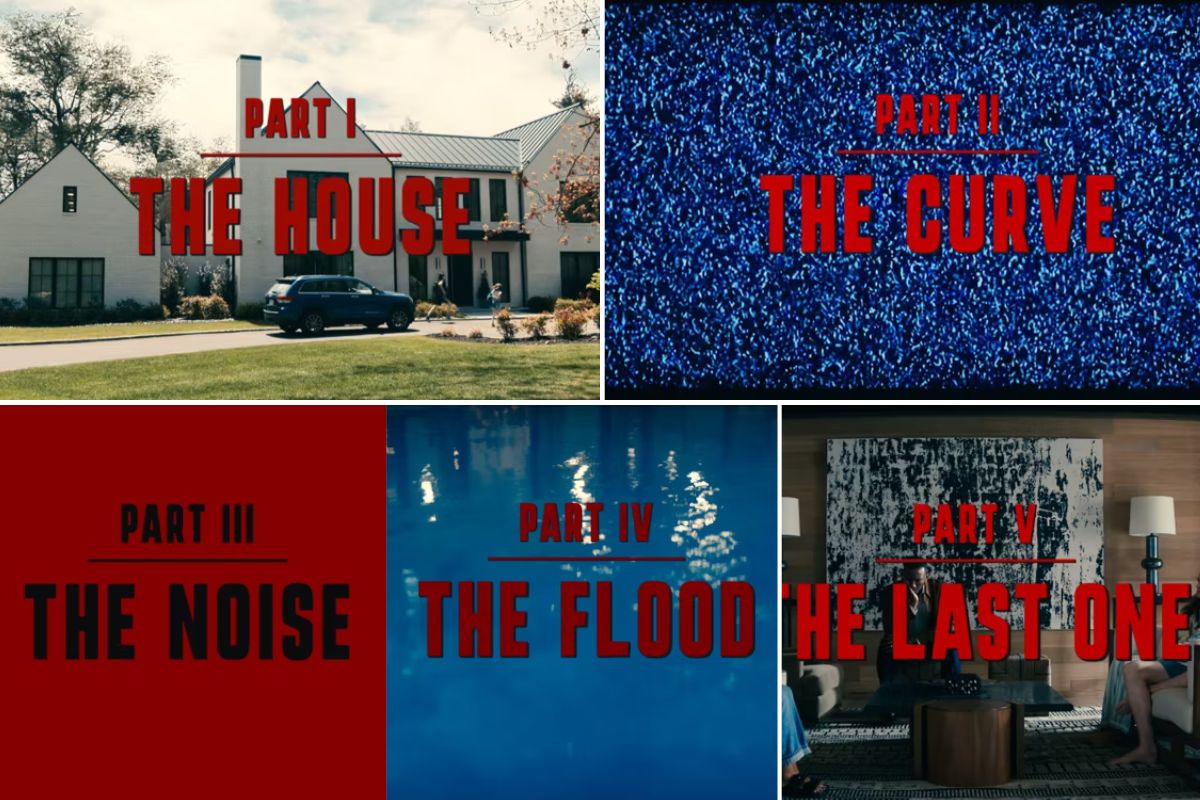
“Leave the World Behind” ingeniously structures its narrative into five distinct parts, each bearing a symbolic weight beyond mere chapter divisions. These segments, demarcated by title screens, not only encapsulate the unfolding events but intricately mirror the larger thematic arcs within the storyline.
The initial duo of sections, Part I: The House and Part II: The Curve, act as a prologue, setting the stage for the impending turmoil. However, the subsequent trio—Part III: The Noise, Part IV: The Flood, and Part V: The End—intertwine seamlessly with GH’s strategic delineation of the plot stages shared with Clay.
GH’s strategic breakdown aligns flawlessly with the essence of each corresponding section. Stage 1, the phase of isolation aimed at rendering the target “deaf and dumb,” seamlessly mirrors the disorienting events encapsulated within “the noise” of Part III. Stage 2, a symphony of synchronized chaos through attacks and misinformation, resonates with the inundation of falsehoods and orchestrated disarray witnessed in “the flood” of Part IV, including the perplexing red cards.
Finally, stage 3, the anticipated coup d’état, finds its narrative equivalent in the concluding segment, Part V: The Last One. This synchronization between GH’s delineation and the partitioned storyline enhances the movie’s depth, lending credence to the deliberate choice of a five-part structure.
Though the storyline could have functioned with a streamlined three-part arrangement given its timeline, the deliberate inclusion of Part I and Part II emerges as a prescient setup to pave the way for GH’s delineated three phases. This multi-layered approach not only accentuates the narrative’s complexity but enriches the viewer’s understanding, melding storytelling with thematic depth in an intricately woven tapestry of events.
Why Were the Animals Acting So Weird? Why were there flamingos in New York?
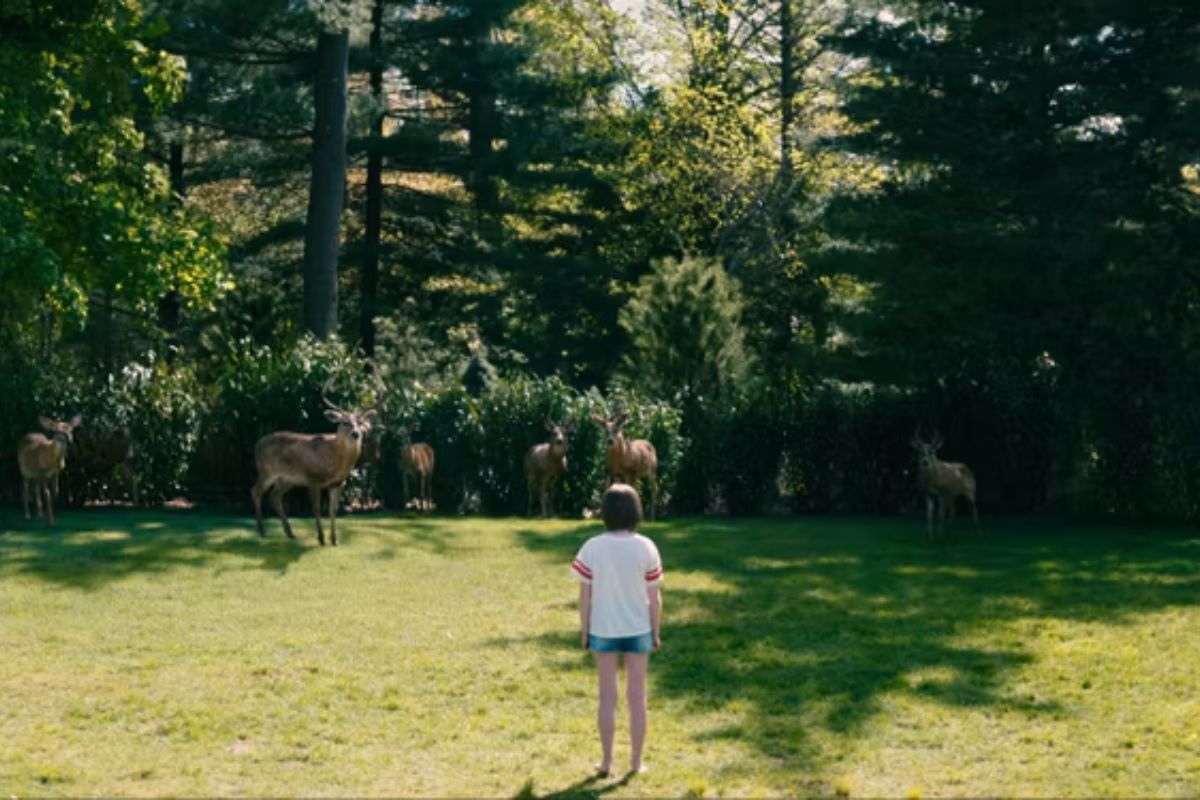
The animal encounters in “Leave the World Behind” create an eerie backdrop, shrouded in mystery and foreboding. Initially, the appearance of the White Lion oil tanker washing ashore serves as a harbinger, a prelude to a series of unsettling events that follow. Clay’s mention of the deer as a positive omen according to Mesoamerican beliefs contrasts starkly with the ominous turn of events, as these otherwise benign creatures take on an unnerving presence.
The wildlife anomalies persist, with flamingos intruding upon the serenity of the property’s pool and avian flocks dotting the sky throughout the narrative. The emergence of these creatures, their uncharacteristic behaviors, and the escalating menace they seem to embody hint at a larger disturbance in the natural order. Clues scattered throughout the movie, while not providing explicit answers, contribute to the looming sense of an imminent upheaval.
A critical moment arrives when Clay ventures into town in search of connectivity. Amidst the crackling radio waves, a snippet of crucial information cuts through—a chilling broadcast warning of fallout from the ongoing cyber assault precipitating an environmental catastrophe in the south. The oil tanker’s ominous presence serves as a tangible clue, hinting at broader turmoil plaguing other regions.
Connecting the dots reveals a distressing picture: potential oil spills in the Gulf of Mexico and a string of environmental disasters coercing animal migration patterns. The proximity of the flamingos’ probable origin in Florida, coupled with these catastrophic events, offers a plausible explanation for the unprecedented incursion of wildlife into the New York area.
The convergence of these clues paints a disconcerting tableau, underscoring the intricate web of cause and effect. While the full extent of the unfolding crisis remains shrouded, the interplay between human-induced calamities and their repercussions on the natural world forms a haunting undercurrent, elevating the tension and uncertainty within the narrative.
What is “the noise”?
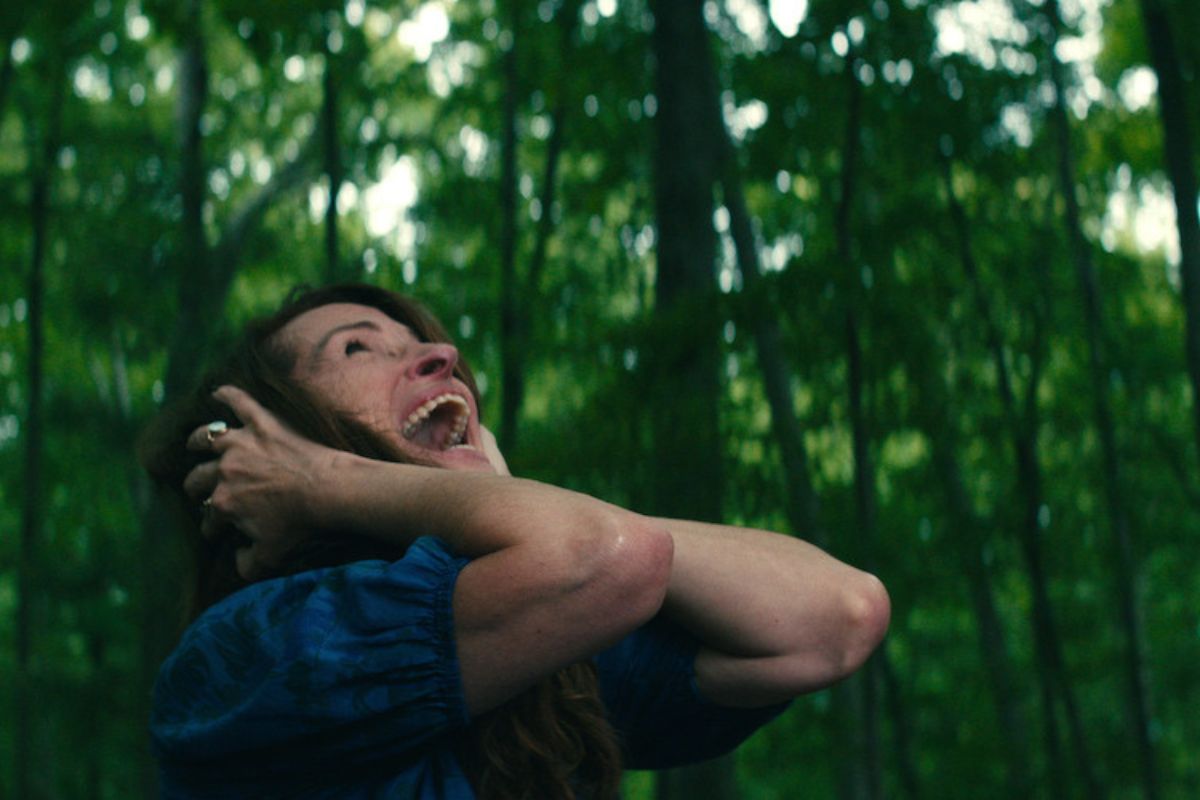
In the latter stretch of the film, the pandemonium escalates, culminating in a jarring, piercing noise that reverberates across Long Island. Director Sam Esmail, sparked by the mention of this disconcerting auditory element in the book, swiftly engaged his trusted sound designer, Kevin Buchholz, a collaborator since the early days of “Mr. Robot.”
Well before the commencement of filming, Esmail and Buchholz delved into the task of fine-tuning this sound, drawing inspiration from the enigmatic phenomenon known as Havana Syndrome—an elusive noise linked to unexplained health issues affecting individuals.
What made this endeavor intriguing was Esmail’s strategic move of keeping the sound under wraps until filming commenced. The element of surprise was pivotal, a tool to elicit genuine reactions from the actors. Esmail, with a mischievous air, chose not to disclose this to the cast. He waited for the perfect moment, seizing Julia Roberts’ close-up scene as the opportune instance to unleash the cacophonous revelation.
As the cameras rolled and the scene unfolded, the sudden eruption of the sound enveloped the set, capturing Julia Roberts’ unscripted and raw reaction. Her genuine surprise and visceral response authentically mirrored the character’s shock in that crucial moment.
This directorial maneuver not only added an unanticipated layer of authenticity to the performance but also highlighted Esmail’s penchant for crafting immersive, unexpected experiences for both his audience and actors, enriching the storytelling process through unanticipated, visceral moments.
Why do Archie’s teeth fall out?
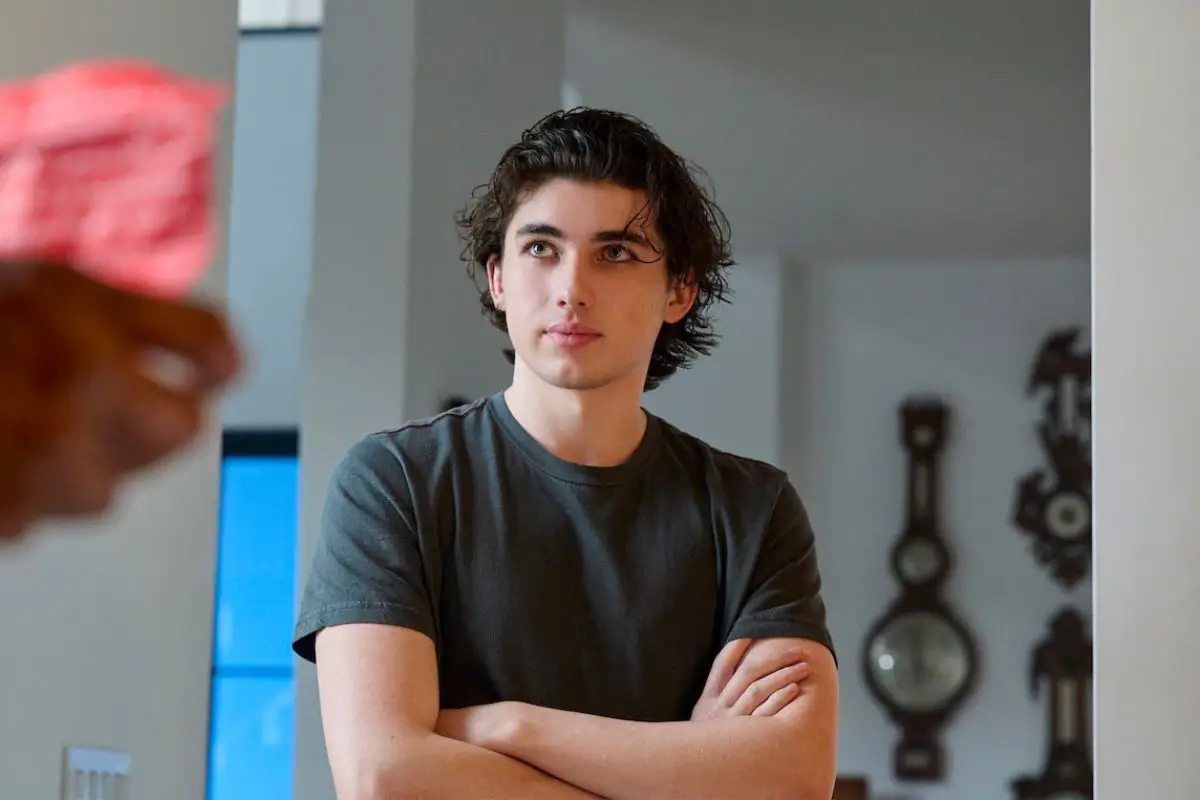
Archie’s haunting dental ordeal in “Leave the World Behind” unfolds as a perplexing and alarming moment in the storyline. Following exposure to the dissonant noise or, perhaps, an encounter with a tick during his foray into the surrounding woods, Clay and Amanda’s son, portrayed by Charlie Evans, awakens to a nightmarish discovery—a mouth besieged by decaying gums, leading to the gradual expulsion of his front teeth.
The ghastly visual, while chilling for anyone with a fear of dental discomfort, was meticulously executed through practical effects. Director Sam Esmail, a staunch advocate for practical effects, lauds the impact it brings to the performances. The special effects team crafted an appliance for Charlie, the young actor, enabling him to physically engage with the unsettling scene. As Charlie pulled the appliance from his mouth, his genuine horror echoed the reactions sought by Esmail, intensifying the authenticity of the moment.
During the scene, Julia Roberts’ character, Amanda, notably maintains a considerable distance from her son, a choice that wasn’t scripted. Roberts, so genuinely repelled by the effect, refrained from approaching her on-screen child to offer solace. Esmail underscores the distinction between practical effects and CGI, emphasizing that eliciting real reactions from the cast amplifies the impact of the scene, making it more tangible and visceral for both the actors and the audience.
This instance epitomizes Esmail’s commitment to evoking genuine emotions through tangible, practical elements, generating an atmosphere of authenticity that reverberates through the performances, transcending the scripted narrative to evoke raw, genuine responses from the cast.
How Did Danny Know About the Attack Before it Happened?
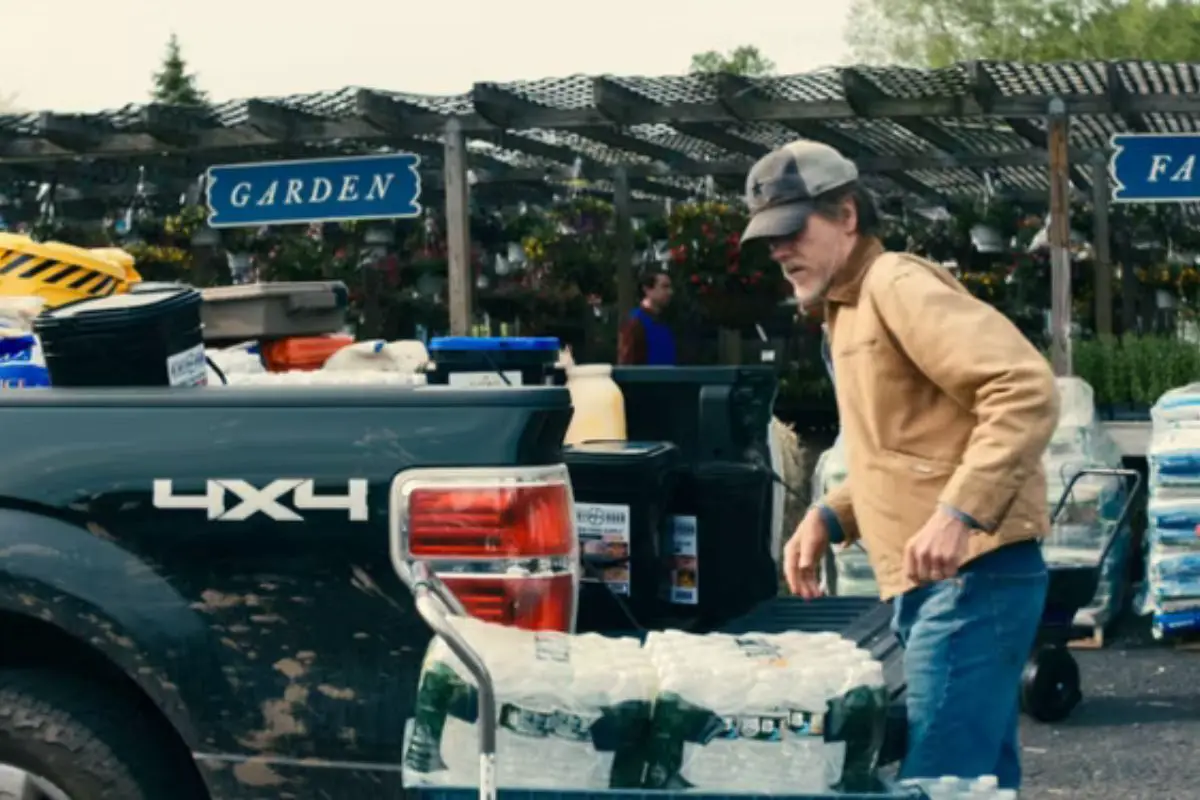
Amanda’s encounter with Danny, played by Kevin Bacon, loading up supplies during her town visit takes on a deeper significance as the story unfolds. Initially, she doesn’t grasp Danny’s foresight in preparing for the impending chaos, unlike George, who sensed the approaching storm through market fluctuations and cryptic hints from influential acquaintances—a result of what he termed “the curve.”
Unlike George, Danny lacked access to similar resources or connections. Still, he harbored a premonition, meticulously fortifying his home with essential provisions in anticipation of an imminent upheaval. His justification revolves around snippets gleaned from newspapers, notably Russia’s swift recall of diplomats. However, Danny’s articulation betrays a blend of xenophobic conjecture and possibly embellished information from a friend in San Diego, hinting at red pamphlets inscribed with Asian characters.
Danny occupies a paradoxical space. On one hand, his preparedness deserves acknowledgment, a proactive approach to a potential crisis. On the other, his stance teeters on the edge of a paranoid prepper archetype, seemingly guided by a blend of rational concern and speculative stereotypes.
The dichotomy surrounding Danny’s actions—preparation versus potential paranoia—adds complexity to his character. His readiness could stem from a blend of genuine concern and an innate distrust fueled by snippets of information, mingling valid deductions with biased presumptions.
This multifaceted portrayal of Danny invites viewers to navigate the blurred lines between prudent foresight and the shadowy realm of paranoia, offering a nuanced exploration of human responses to impending crisis scenarios.
Leave the World Behind Ending and True Meaning Explained
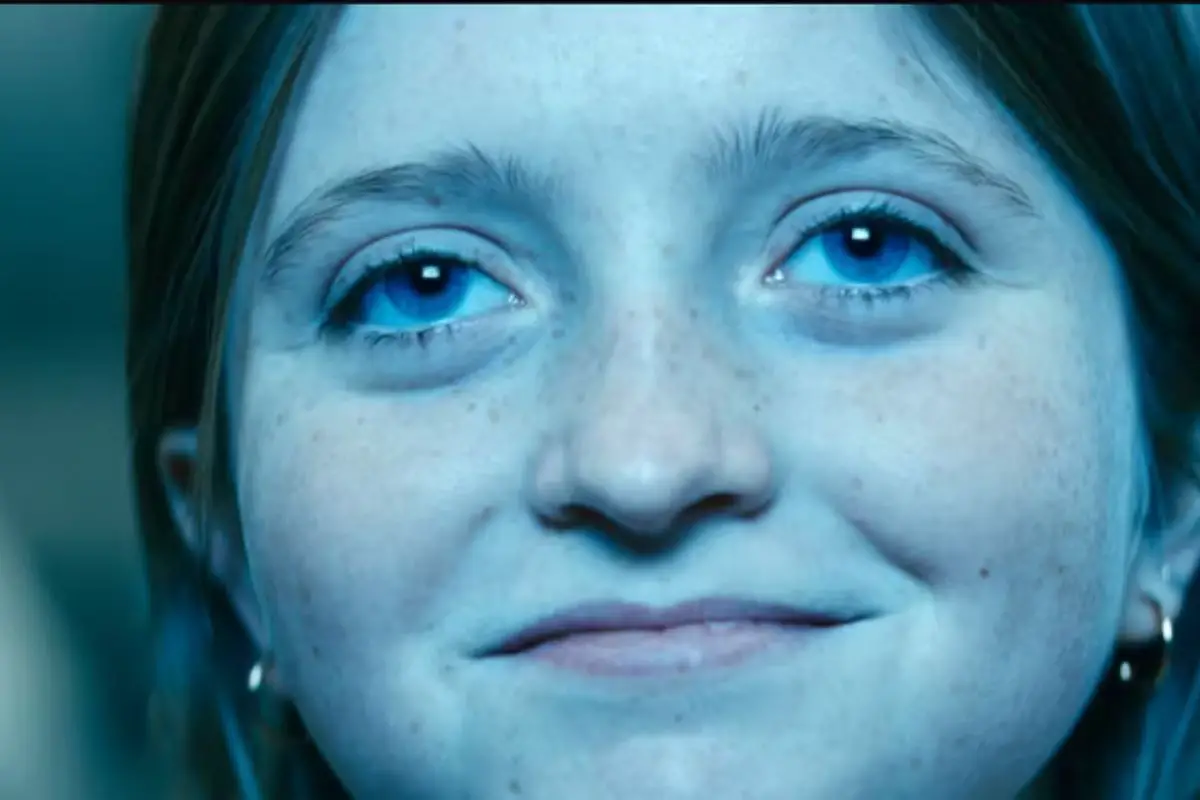
“Leave the World Behind” masterfully weaves the intricacies of human dynamics through the evolving character arcs of the Sandfords and the Scotts, particularly encapsulated by Amanda and Ruth, offering a profound commentary on the essence of humanity itself. Amidst initial discord and distrust, a pivotal moment crystallizes when Amanda’s poignant declaration pierces the air, acknowledging humanity’s collective facade—a shared illusion veiling the harsh realities we choose to ignore.
The convergence of these families, initially embroiled in mutual suspicion and reluctance to cohabitate, becomes a microcosm of societal discord. Their realization of the necessity to bridge divides and collaborate for survival mirrors a fundamental truth: cooperation amidst adversity becomes an imperative catalyst for collective resilience.
In this complex narrative tapestry, Rose’s fixation on “Friends” emerges as a thematic anchor, a meta commentary on the broader tale. GH and Ruth’s arrival, coupled with Clay’s mention of a former student’s analysis of media serving as both escape and reflection, parallels the multifaceted nature of “Leave the World Behind.” The movie, an engrossing thriller depicting societal collapse, doubles as a canvas unveiling profound human truths through its characters, much like the role “Friends” plays in the lives of these individuals.
As chaos escalates, Rose’s escapism through “Friends” embodies a desire for closure amidst turmoil, contrasting Ruth’s astute observation—viewing the show as a nostalgic reverie for an idealized past that never truly existed.
In a poignant climax, Rose seeks solace amidst the turmoil, finding refuge in the Thorne house, stumbling upon their bunker with its extensive DVD collection, notably including “Friends.” As the world unravels outside, she immerses herself in the series finale, “The Last One,” poetically echoing the film’s Part V title. This juxtaposition—a world in disarray versus Rose seeking closure in a TV show—creates a haunting symmetry, inviting contemplation on escapism versus introspection amid chaos.
Much like the characters within the narrative, audiences engaging with “Leave the World Behind” undergo a similar dichotomy. It serves as both a refuge from reality and a reflective mirror, capable of offering escape or profound introspection, depending on the lens through which it’s experienced. The movie’s dual nature—a gripping escape and a reflective exploration—resonates with the audience’s choice of engagement, echoing the duality of the human condition amidst tumultuous times.
Read Now:

